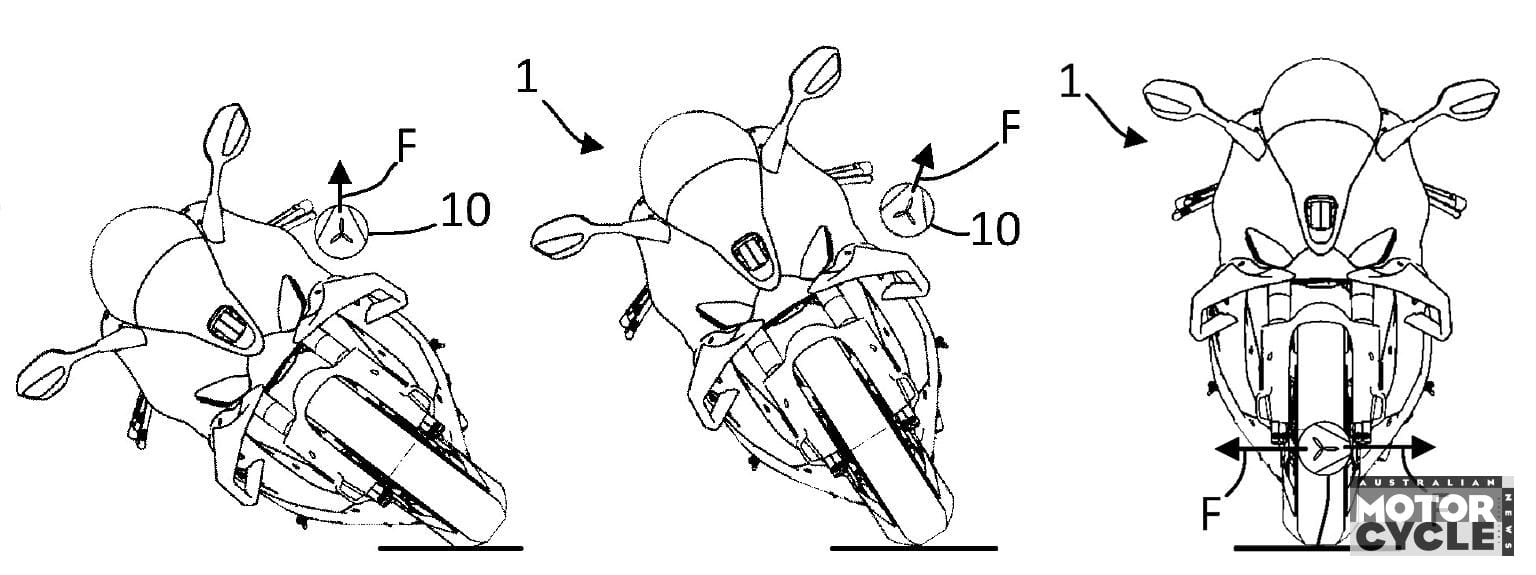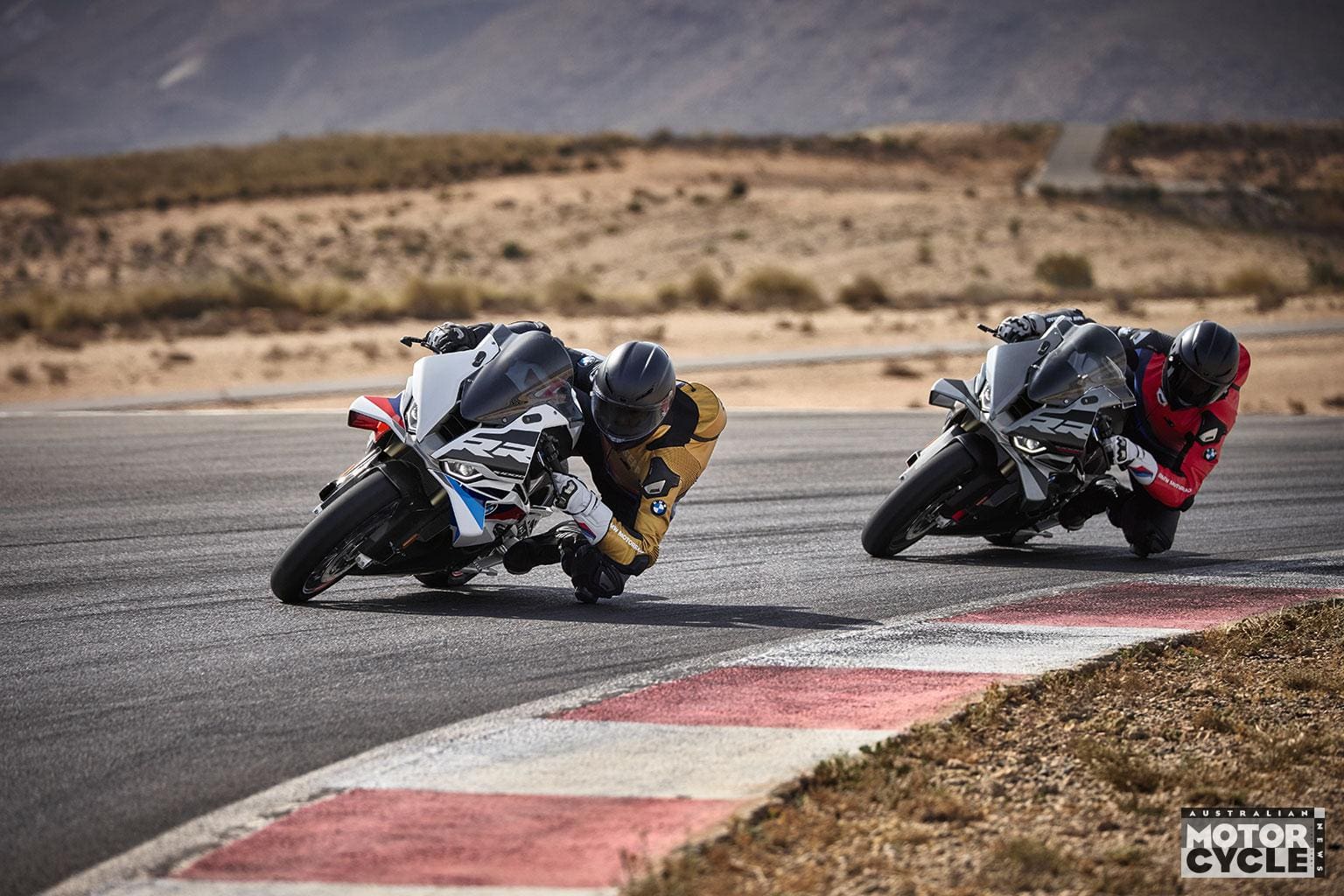Active aero winglets are old news. The future lies in fan-assisted cornering systems
When it became clear that aerodynamic appendages were a valuable tool in MotoGP racing a few years ago, it opened a Pandora’s Box of increasingly extravagant bulges and spoilers intended to extract every ounce of available downforce both in straight lines and during cornering. Now BMW has filed a patent for a technology that shows the next step in achieving an aerodynamic benefit thanks to internal air ducts and a fan to blast air through strategically-placed jet nozzles.

The idea of using thrusters to help control a bike was mooted back in 2018 when we reported that Bosch had demonstrated a prototype system that used gas generators – the same tech featured in airbags – paired to a rider-assist system to provide brief blasts of thrust, countering slides and preventing crashes. The Bosch system was an emergency design, though, requiring the gas charges to be replaced after each use, while BMW’s idea is to use a constant, adjustable flow of high-pressure air to assist the bike around corners.

It’s not a new idea. Racing car designers have toyed with using fans to suck air out and create downforce for decades. Jim Hall’s Chaparral 2J exploited the idea back in 1970, using a separate two-stroke engine to power a pair of rear-mounted fans, extracting air from under the car. Then the Gordon Murray-designed Brabham BT46B brought the same concept to Formula 1 in 1978, winning the only race it entered before the idea was shelved in the name of safety and to prevent a costly ramping-up of R&D down that path. More recently, Murray explored the same idea with the 1990s McLaren F1 road car, and today a prominent rear fan is a feature on the T.50 supercar sold under his own Gordan Murray Automotive brand.

Taking the idea to an even more extreme level, the electric McMurtry Spierling car creates two tonnes of downforce using a powered suction fan, setting a series of records including fastest-ever times at the Goodwood hillclimb course and the old Top Gear test track.
BMW isn’t going to quite the same extreme with the system featured in its latest patent application, but still taps into the potential of using a ducted electric fan to blow air where it’s needed in pursuit of improved performance.
The patent illustrations are simplified, but show that outlet nozzles could be positioned in multiple locations around the bike, while computer-controlled flaps inside the ducting system behind the bodywork choose where to direct the thrust.

Under acceleration it can go rearward, adding a jet-style boost to acceleration. Under braking it can be reversed, helping to slow the bike, and during corners it can be directed outwards, pushing the bike towards the apex.
We’ve seen a rash of active-aero patents from BMW recently, including adjustable winglets and a system intended to reroute exhaust gases to either side, depending on cornering angle, in pursuit of improved downforce and more grip.
Whether any of them reach production has yet to be seen, but it’s clearly an area the company has a strong focus on at the moment.
The post BMW’s Blow-Hard Thruster Tech appeared first on Australian Motorcycle News.



Recommended Comments
There are no comments to display.